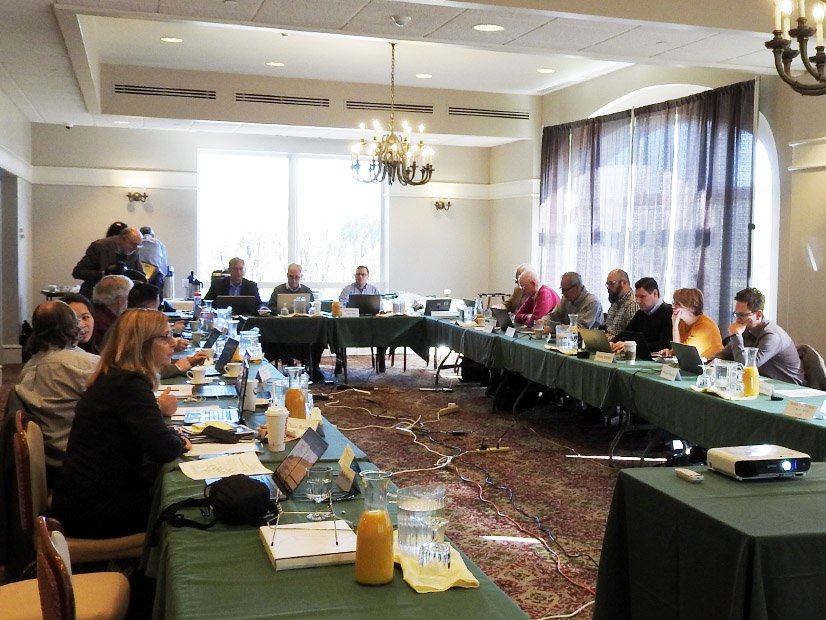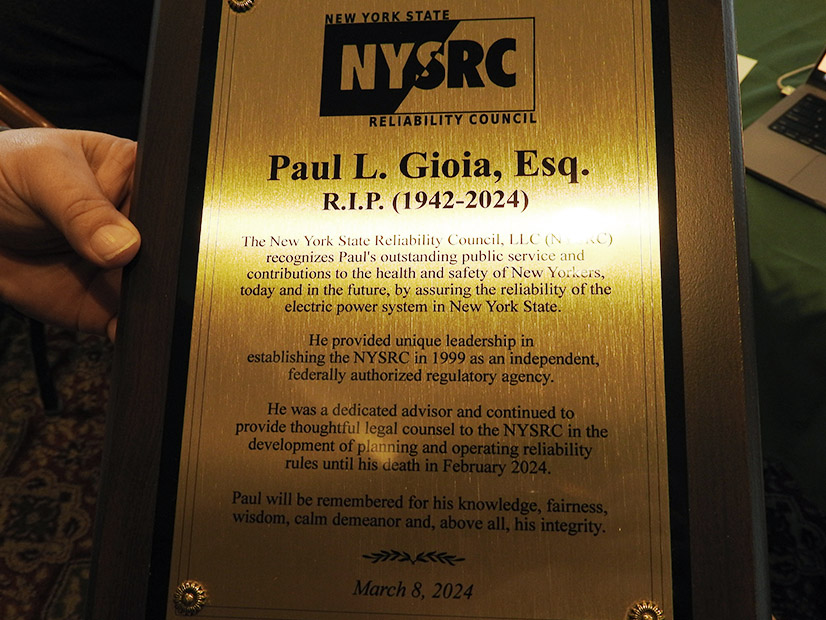
Proposed Transmission Criteria for Gas Contingencies
ALBANY, N.Y. — The New York State Reliability Council Executive Committee on March 8 approved for industry review two new proposed reliability rules, 153a and 154a, aimed at revising NYISO’s transmission planning requirements to account for a loss of the gas delivery system and fuel shortages at power plants, respectively.
Roger Clayton, chair of the council’s Reliability Rules Subcommittee, said the group’s goal is to “basically convert what are currently considered extreme contingencies and extreme system conditions into design conditions.”
While the failure of the gas delivery system to multiple plants is already included as an extreme contingency in the council’s design criteria, PRR-153a would add the loss of fuel to a single plant as another contingency. Both would be clarified to apply specifically to fossil-based plants.
“This recognizes the increasing importance of gas going forward amid the increasing development of renewable resources, and the need to have reliable backup base reserves by incorporating a design contingency for the sudden loss of gas fuel,” Clayton said.
PRR-154a aims to better align the council’s requirements with expected gas plant availability under winter peak conditions. It would add the unavailability of nonfirm gas service during the winter peak to the “credible combinations” of conditions under which the grid would be strained, and it would clarify that extreme conditions include the loss of all gas generation, regardless of supply firmness.
“As New York becomes a winter-peaking system, the gas supply to electric generation plants is expected to be strained,” the proposal says. “To maintain reliability in the future, New York’s grid should be designed to withstand gas shortages during forecasted winter peak conditions.”
Zach Smith, vice president of system and resource planning at NYISO, commended the committee for developing proposed rules that respond to evolving market conditions.
Smith said the ISO’s only concern with the proposals was related to timing, as it would like to incorporate them into its annual Reliability Needs Assessment because it might “identify reliability needs in the wintertime” that it might have previously overlooked. Smith added that, if the timing aligns as intended, the rules would also be integrated into NYISO’s first newly revamped interconnection cluster study, but not its transitional cluster study.
The proposed rules will be posted online for a 45-day review period.
NYISO Updates
Aaron Markham, NYISO vice president of operations, briefed the committee on how the ISO is preparing for the April 8 solar eclipse, predicting it could reduce the afternoon’s solar production by “upwards of 3,400 MW if it is a clear sky day.”
Markham added that if the eclipse occurs on a cloudy day, NYISO would not conduct a post-event review of its impact on solar production, as the previous cloudy day eclipse event had only minor impacts on solar production. (See “October Operations,” NYISO Braces for the Coming Winter.)
NYISO staff also addressed Advanced Energy United’s recently released scorecard on ISO/RTO generator interconnection processes. The ISO received a C-, better than only PJM and ISO-NE, though no grid operator scored higher than a B. (See AEU Grades ISO/RTO Queues as Order 2023 is Implemented.)
COO Emilie Nelson said the study relied on a small sample of interconnection queue datapoints for each ISO/RTO. “Nevertheless, we’re working really hard with our stakeholders to improve the interconnection process, and we take that objective very seriously, so I think that the results of that effort will come to bear in the next few years.”
Smith followed up, saying, “We’ve reached out to the authors to try to understand what went into their [methodology]. … But what they were intending was to create a reference point, because all of [the ISO/RTOs] are entirely changing their interconnection processes, and we are completely overhauling our current processes.
“So, in talking to them, and trying to understand their objective, their objective is to put out another report in the future to demonstrate that ‘this is where we were, and where are we in the future?’”
Gioia, Burman Honored
The committee opened its meeting by dedicating a plaque in honor of former New York Public Service Commission Chair Paul L. Gioia, who helped establish NYISO.
Gioia, 81, died last month. He was appointed chair by Gov. Hugh Carey in 1981 and served for five years until he was fired by Gov. Mario Cuomo. He then joined law firm Dewey & LeBoeuf, where he became lead counsel for the New York Power Pool and helped oversee its transition into the ISO in the late ’90s.
The council “recognizes Paul’s outstanding public service and contributions to the health and safety of New Yorkers today, and in the future, by assuring the reliability of the electric power system in New York state,” Clayton said.
PSC Commissioner Diane Burman also paid tribute, highlighting Gioia’s impact as a mentor and how much his “personal and professional friendship” meant to her. She shared a personal tribute on LinkedIn.
The committee recognized Burman for her service at the meeting’s conclusion. She announced last month that she would not seek reappointment after a decade on the commission. Her term ended Feb. 1.
“I’ve been a public servant over for 20 years; five of that was as a staffer for the commission, and over 10 years has been as a commissioner,” she said. “Leaving is really bittersweet to me, but it is time for me to pass the baton.
“I really wanted to come here today to thank the Reliability Council as a whole, but more importantly, each of you individually for your continued service. Thank you for making me a better, more well-rounded regulator, and I am truly going to greatly miss being a part of all this with all of you.”

